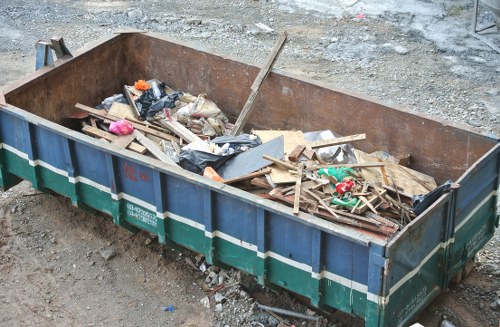Efficient Furniture Clearance in Temple: A Comprehensive Guide
Understanding the Importance of Furniture Clearance in Temple

Maintaining a temple’s sanctity and functionality often requires periodic furniture clearance. Over time, furniture can become worn out, outdated, or simply no longer serves the temple’s needs. Effective furniture clearance ensures that the temple remains a serene and welcoming space for devotees and visitors alike.
Furniture clearance is not just about removing old items; it’s about creating an environment that reflects the temple’s current mission and aesthetics. Whether preparing for a renovation, optimizing space, or donating items to those in need, understanding the process and benefits is crucial.
Incorporating furniture clearance into the temple’s maintenance routine can lead to a more organized, efficient, and spiritually uplifting environment. This guide explores the steps, benefits, and best practices for clearing furniture in a temple setting.
Planning Your Temple’s Furniture Clearance

Before embarking on furniture clearance, it’s essential to plan meticulously. Start by assessing the current inventory of furniture within the temple premises. Create a detailed list of items, noting their condition, relevance, and potential for reuse or donation.
Identify key areas where furniture clearance is needed the most. This could include prayer halls, administrative offices, storage rooms, and communal areas. Prioritize areas based on usage frequency and the importance of maintaining a clutter-free environment.
Set clear objectives for the clearance process. Whether the goal is to donate to charitable organizations, recycle materials, or repurpose furniture for other uses, having a defined purpose will guide your decisions and streamline the process.
Executing the Furniture Clearance Process

With a solid plan in place, the next step is executing the furniture clearance. Begin by scheduling the clearance during a period that causes minimal disruption to temple activities. Communicate the schedule to all stakeholders to ensure cooperation and understanding.
Engage with professional furniture clearance services that specialize in religious institutions. Their expertise can facilitate a smooth and efficient process, ensuring that items are handled with the respect and care they deserve.
Sort the furniture into categories: items to keep, donate, recycle, or discard. For items earmarked for donation, ensure they are clean, functional, and in good condition. Partnering with reputable charities can provide these items to communities in need.
Best Practices for Sustainable Furniture Clearance

Adopting sustainable practices during furniture clearance is essential for minimizing environmental impact. Opt for recycling materials whenever possible. Many components of old furniture, such as wood, metal, and fabric, can be repurposed or recycled, reducing waste and promoting sustainability.
Consider refurbishing or upcycling furniture that holds sentimental or historical value. Restoring these pieces can preserve the temple’s heritage while providing functional and aesthetically pleasing items for continued use.
Implement eco-friendly disposal methods for items that cannot be reused or recycled. Partnering with local waste management services that prioritize sustainable practices ensures that unwanted furniture is disposed of responsibly.
Engaging the Community in Furniture Clearance

Involving the community in the furniture clearance process can enhance its effectiveness and foster a sense of collective responsibility. Organize community events or volunteer drives to assist with the clearance, creating a collaborative and supportive atmosphere.
Promote the donation of cleared furniture to local charities or individuals in need. Highlighting the positive impact of donated items can encourage more community members to participate and contribute generously.
Provide regular updates and feedback to the community about the clearance process and its outcomes. Transparency builds trust and encourages ongoing support for future initiatives.
Benefits of Effective Furniture Clearance in Temple
An efficient furniture clearance in temple brings numerous benefits. It enhances the aesthetic appeal of the temple, creating a more inviting and spiritually conducive environment. A clutter-free space allows devotees to focus better during prayers and rituals.
Additionally, furniture clearance can optimize the use of space, making the temple more functional and accommodating for various activities. It also provides an opportunity to update and modernize the temple’s furnishings, aligning them with contemporary needs and preferences.
Moreover, donating furniture supports charitable causes, contributing to community welfare and reinforcing the temple’s commitment to social responsibility.
Enhanced Aesthetics and Functionality
Clearing outdated or damaged furniture can significantly improve the temple’s appearance. Modern, well-maintained furniture contributes to a serene and organized atmosphere, enhancing the overall worship experience.
- Improved visual appeal
- Increased comfort for visitors
- Optimized space utilization
Environmental Impact
By opting for recycling and sustainable disposal methods, temples can reduce their environmental footprint. Sustainable clearance practices demonstrate a commitment to environmental stewardship, aligning with broader community values.
Common Challenges in Furniture Clearance
Despite its benefits, furniture clearance in temple settings can present several challenges. Emotional attachments to furniture items, logistical obstacles, and limited resources are common hurdles that need to be addressed.
Providing support and clear communication can help mitigate emotional attachments, ensuring that the clearance process remains respectful and considerate. Additionally, strategic planning and the assistance of professional services can overcome logistical challenges.
Allocating adequate resources and budgeting for furniture clearance initiatives ensures that the process is thorough and effective, avoiding incomplete or rushed clearance efforts.
Case Studies: Successful Furniture Clearance in Various Temples
Examining successful furniture clearance initiatives in different temples can provide valuable insights and inspiration. These case studies highlight effective strategies, best practices, and innovative solutions that have led to positive outcomes.
For instance, Temple A implemented a phased clearance approach, allowing for gradual removal and replacement of furniture without disrupting temple activities. This method ensured a smooth transition and minimized inconvenience for devotees.
Temple B partnered with local charities to donate cleared furniture, fostering a sense of community and enhancing the temple’s charitable endeavors. Such collaborations demonstrate the broader social impact of effective furniture clearance.
Tools and Resources for Furniture Clearance
Equipping the temple management with the right tools and resources is essential for efficient furniture clearance. Inventory management software can help track and organize furniture items, simplifying the clearance process.
Engaging with professional clearance services that specialize in religious institutions ensures that items are handled appropriately and responsibly. These services offer expertise in sorting, transporting, and disposing of furniture, making the process more streamlined and less burdensome.
Additionally, leveraging community networks and volunteer resources can provide the necessary manpower and support to execute the clearance effectively.
Future Trends in Furniture Clearance for Temples
As temples continue to evolve, so do the trends in furniture clearance. Embracing technology and sustainable practices will shape the future of clearance initiatives.
Innovations such as digital inventory systems, virtual consultations with clearance experts, and eco-friendly materials will become increasingly prevalent. These advancements will enhance the efficiency, sustainability, and effectiveness of furniture clearance in temple settings.
Moreover, a growing emphasis on community engagement and social responsibility will influence how temples approach furniture clearance, fostering more collaborative and environmentally conscious practices.
Conclusion: Embracing Furniture Clearance in Temple Management
Effective furniture clearance in temple is a crucial aspect of maintaining a harmonious and functional sacred space. By planning meticulously, adopting sustainable practices, and engaging the community, temples can ensure that their environments remain welcoming and spiritually uplifting.
Embracing furniture clearance not only enhances the temple’s aesthetics and functionality but also contributes to broader social and environmental goals. As temples continue to serve as pillars of the community, their commitment to efficient and responsible furniture clearance sets a positive example for others to follow.
Ready to streamline your temple’s furniture clearance process? Contact us today to learn how we can assist you in creating a more organized and serene sacred space.
